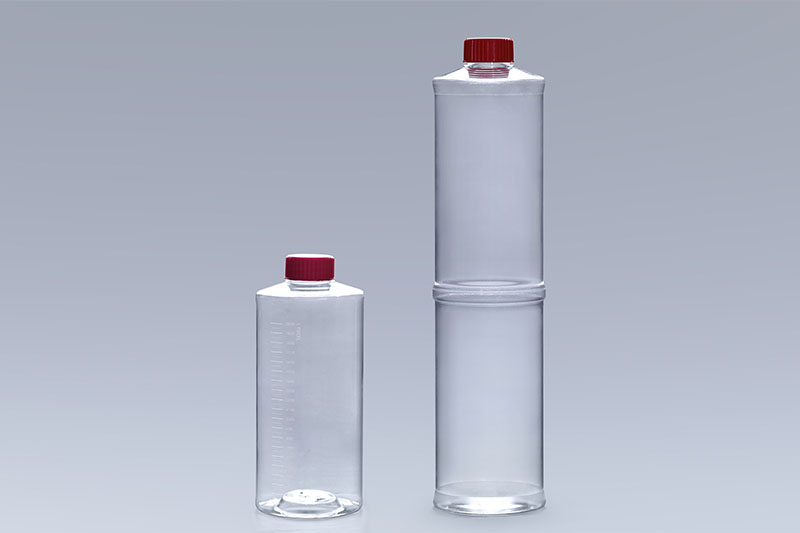Cell culture roller bottles, as the name suggests, are a type of consumables used to culture cells. With the help of the cell culture spinner bottle system, it is widely used in the fields of cell biology, virology, microbiology and pharmaceutical industry.
The in vitro culture of cells and tissues has become an essential content in the field of life sciences. There are a wide variety of cultured cells, from viruses to bacteria to fungi, from human cells to animal cells and plant cells. Some cells and tissues can grow in suspension, but a considerable number of mammalian cells require surface attachment, so the requirements for cell culture consumables are relatively high.
The cell culture roller bottles are suitable for the cultivation of a variety of adherent cells and suspension cells, such as Vero cells, HEK 293 cells, CAR-T cells, MRC5, CEF cells, porcine alveolar macrophages, myeloma cells, DF- 1 cells, ST cells, PK15 cells, Marc145 cells and other adherent cells; suspension cells such as CHO cells, insect cells, BHK21 cells and MDCK cells, etc.
There are various types of cell culture consumables, and cell culture roller bottles are just one of them. High-efficiency erlenmeyer flasks, cell factory systems, cell culture plates, cell culture dishes, etc. are all cell consumables. Corresponding to different specifications and materials, it is an essential item in the cell culture process.
The FAI climbed 5.9 percent year-on-year in the first 11 months of 2018, quickening from the 5.7-percent growth in Jan-Oct, the National Bureau of Statistics (NBS) said Friday in an online statement.
The key indicator of investment, dubbed a major growth driver, hit the bottom in August and has since started to rebound steadily.
In the face of emerging economic challenges home and abroad, China has stepped up efforts to stabilize investment, in particular rolling out measures to motivate private investors and channel funds into infrastructure.
Friday's data showed private investment, accounting for more than 60 percent of the total FAI, expanded by a brisk 8.7 percent.
NBS spokesperson Mao Shengyong said funds into weak economic links registered rapid increases as investment in environmental protection and agriculture jumped 42 percent and 12.5 percent respectively, much faster than the average.
In breakdown, investment in high-tech and equipment manufacturing remained vigorous with 16.1-percent and 11.6-percent increases respectively in the first 11 months. Infrastructure investment gained 3.7 percent, staying flat. Investment in property development rose 9.7 percent, also unchanged.
 English
English



















































 Cell Culture Roller Bottles
Cell Culture Roller Bottles